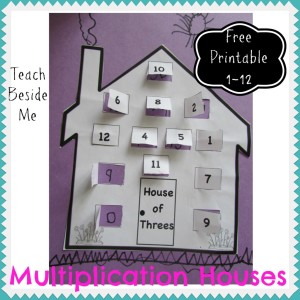6 Tips for Monolingual Parents
I am often asked how will I help my children learn if I don’t speak Chinese. That continues to be the most pressing concern that many parents have when deciding on a language immersion program. The Center for Applied Linguistics has identified 6 ways that parent’s can support their child’s learning if they don’t speak the language.
- READ!! READ!! READ!! The Center for Applied Linguistics encourages parents to read to your child daily. Research shows that the stronger the development of the native language, the greater the proficiency in the immersion language, so children who enter an immersion program with a strong base in English will succeed more easily than those whose English skills are not as strong.
- Connect with the Teacher: This is always a great way to support your child’s learning. Communicate with your child’s teacher on a regular basis. Ask questions about your child’s academic, social and language development. Let his/her teacher know that you are interested in their education and open to learning more about your child’s progress in the classroom. Research continues to highlight the benefit of the parent/teacher relationship and this is especially true in a language immersion program.
- Engage your child: Stay informed about what your child is learning in the classroom and engage in activities at home where they need to apply what they are learning in class. Is your child learning colors, body parts, about their community, life cycles or cooking an interesting dish. Find ways to incorporate these lessons into your daily activities as an excellent opportunity to further support your child’s learning.
- Stay Committed: Like any new school there may be a few bumps along the way. Your child may have a difficult time understanding the teachers expectations. Your child may state that they are not making friends at school. You also may have various reservations about whether or not language immersion is the “right fit” for you and your child. Before selecting a language immersion school participate in an extensive parent orientation, ensure that you understand the nature of the school’s program and where appropriate that your child does also. Stay in contact with the administration to ensure that your questions or concerns are addressed. Frequent and close contact between the school and parents helps to maintain your commitment to the program.
- More Reading! It benefits your child if you are well informed about immersion education. There are an unlimited number of resources available on-line for monolingual parents with students enrolled in language immersion programs. Browse the web and check out our resources for information on the latest research, tips, and tools.
- Beyond the Classroom: Research also indicates that supporting your child’s use of the immersion language outside of the school context is a great way to enhance your child’s learning experience. This can be done by providing reading materials in the child’s immersion language. We have purchased some great videos at Ranch 99 – one is a collection of fairy tales and the other is a collection of songs. The girls enjoy both. Additionally, parents can hire a tutor or develop relationships with other parents at the school that are fluent in the immersion language and swap a few sits so your child can experience the full language experience in a home environment and you provide them with free child care every now and then.
While volunteering in classrooms is often a good way for parents to be involved in their child’s education, parents need to be careful that their volunteering efforts don’t compromise children’s use of the immersion language. Some programs designate one afternoon per week for parent volunteers, encourage volunteering during periods when English is used, or have parents volunteer their time for activities that don’t involve classroom interaction.
- BONUS TIP — Parent’s do not need to know the second language (at any level) in order for their child to succeed in an immersion program. Parental fluency is NOT a requirement!!!
We’d love to hear any additional ways that you have been able to support your child in the comments section listed below.


 Previous Post
Previous Post Next Post
Next Post





I certainly knew about the majority of this, but however, I still believed it turned out practical. Sweet task!
I totally agree that reading to your kids in Chinese will help a lot. My son goes to Cornerstone Learning Foundation in Palo Alto and they use these cute little books from a textbook publishing company called My First Chinese Words. They have pinyin and English translations, so that I can learn what the Chinese words are too. There’s also a CD that comes with it, so you can hear the correct Chinese pronunciations.
Thanks Esther for adding that great resource. They also use these books at my daughter’s school and we intend to incorporate them into our bedtime routine at home.
Stay with this guys, you’re hlpneig a lot of people.
Learning a new language reiuqres effort, plain and simple. Some languages are easier than others however. Here are some ideas many second language learners don’t normally realize that should help though.FIRST: Completely eliminate idioms when you speak. We use a LOT of phrases that are not understood in other countries, and they use ones we don’t understand. Examples: Get to first base. Flip the switch. Hitch a ride. Hit the road.Put yourself in the place of a new learner of English and ask yourself if you would really understand the meaning of hit the road’ when you heard it, or would you litterally try to hit the road’?Even between England and North America, for example knock someone up’. In North America it means get someone pregnant. In England it means knock on their door. So you can see how embarrassing it might be should you stumble on an idiom that means something else.SECOND: Realize that it is not ALWAYS a one-for-one word exchange when translating. Some languages can express an idea in as little as one word compared to a few, and vice-versa.Also, many languages don’t use the Subject, Verb, Object sequence that English does. Some are S-O-V or V-S-O, etc.Hand in hand with this, understanding that the idea being expressed is what’s important, not the way it’s said. Just because the sentence wasn’t constructed the way we would have said it doesn’t make it wrong.THIRD: Pronunciation can be improved by reciting the names of things you see as you walk about, and holding conversations with yourself in the absence of friends to practice with. (Warning! Don’t do this in the vacinity of mental institutions.)LAST: I cheated. I learnt the worlds easiest language first and now I find I understand English better (my native tongue) and I’m in a better position to learn more languages. I’ve provided a link below to better explain this.That language was ESPERANTO. It is designed such that you MUST understand sentence structure, which helps to understand other languages. It has 16 gramatical rules with NO EXCEPTIONS!Plus you end up with a multitude of Esperanto friends; oh the burdens we bear.Not to understate it of course, but listen to and read as much as you possibly can, whenever you can.Immersion, immersion, IMMERSION!I listen to Esperanto music all day long, just to tune my ear to it.Any second language makes learning a third easier because you acquire a feel for the differences that other languages might have. Esperanto is the logical choice as the second language because it demonstrates linguistic principles better than most, but more importantly, you can learn Esperanto in months instead of years for any other tongue.In either case, I’m not suggesting that you must learn Esperanto to learn your language of choice, however the first points should help you master another tongue, regardless of whether you learn Esperanto or not.Of course will and determination are required no matter what language you learn.Good luck!Ĝis!
The info on this blog is useful.
i was searching for this, then i found your blog. glad i did that.
My friend seakps the same language. anyways, regarding your question, I would say that you enroll yourself in a language class or try to ask people who knows the language that you want to learn, but I think the easiest way to learn is to tru communication. I don’t know anything about spanish, but now I can talk to anyone using spanish Como estas?bwahahahaha
awesome!
this is an amazing article, thanks.
the post is really very interesting and informative…
consistent and wise words.
I teach English as a foreign laugange, rather than Spanish, but I teach the same age group so maybe some of these ideas might help.Stuff that goes down well with my classes are -Any kind of roleplay involving props recently we’ve done shop, restaurant, and doctor, which all worked well. Shop just involved toys’ flashcards and play money, the kids took turns to be shopkeeper and ask what do you want?’. To add interest for the older kids (5yo) we gave them 10 dollars’ each and hid the prices (we priced cards randomly at 1-8 dollars’) the game was to buy as many things as possible without running out of money.Restaurant also practiced what do you want?’ I want -‘ and required food flashcards, a bandana for the waiter’ and a menu with pictures of food. The server has to take an order then fetch the correct card. Older children enjoyed the challenge of trying to remember several orders at once. Doctor’ involved a plastic stethoscope and a toy syringe the doctor asks What’s wrong?, the patient answers My – hurts.’ and the doctor then has to pretend to give an injection in the correct place.I’m sure you can think of many others! Angry swimming’ reinforces verbs and emotions. A gesture game where they have to act out both the verb and the emotion.Run and touch lay out cards for the answers (or have an adult volunteer hold them up), then shout a question (e.g. do you like -?’ answers being Yes I do.’/’No I don’t’; Which do you like’ I like apples’/’I like lemons’) then the whole class runs and touches an answer, which they then chorus.Bouhiki (requires 2 adults) split the class into 2 teams. Lay out a whole lot of flashcards between them. When you say go’ they have to run and grab a card, then bring it back to their team leader (adult) and either say what the card is or complete a short dialogue before they can get another card. The team with the most cards wins.Vocab drills-Snake Janken put flashcards in a line. split class into 2 teams. On go’ one player from each team starts down the line (from opposite ends) saying each card as they pass it. When they meet, they play rock scissors paper the loser goes to the back of their team line and a new person starts from the beginning the winner continues from the place they got to. The aim is to get all the way across to the opposing team’s side.Karuta (slap the card) for variation (and safety) play with flyswats, squeaky hammers whatever your kids like. 2 players, call a card, first one to hit it wins (for younger kids I don’t keep score, just applaud both kids when they hit the card)A variation is hide and seek karuta’ the cards are face down and the players have to find the correct one by turning them over. My kids love this and it avoids the danger of 2 kids nutting heads as they go for the same card!Anything that involves them having a go at something fun when they get a question right for example we have a plastic pack of fries one is on elastic so when it’s pulled out the rest spring out all over answer a question, pull out a plastic fry, my lot would do that for 40 minutes together if I let them!I could go on and on let me know if you want more!
I found this information interesting.